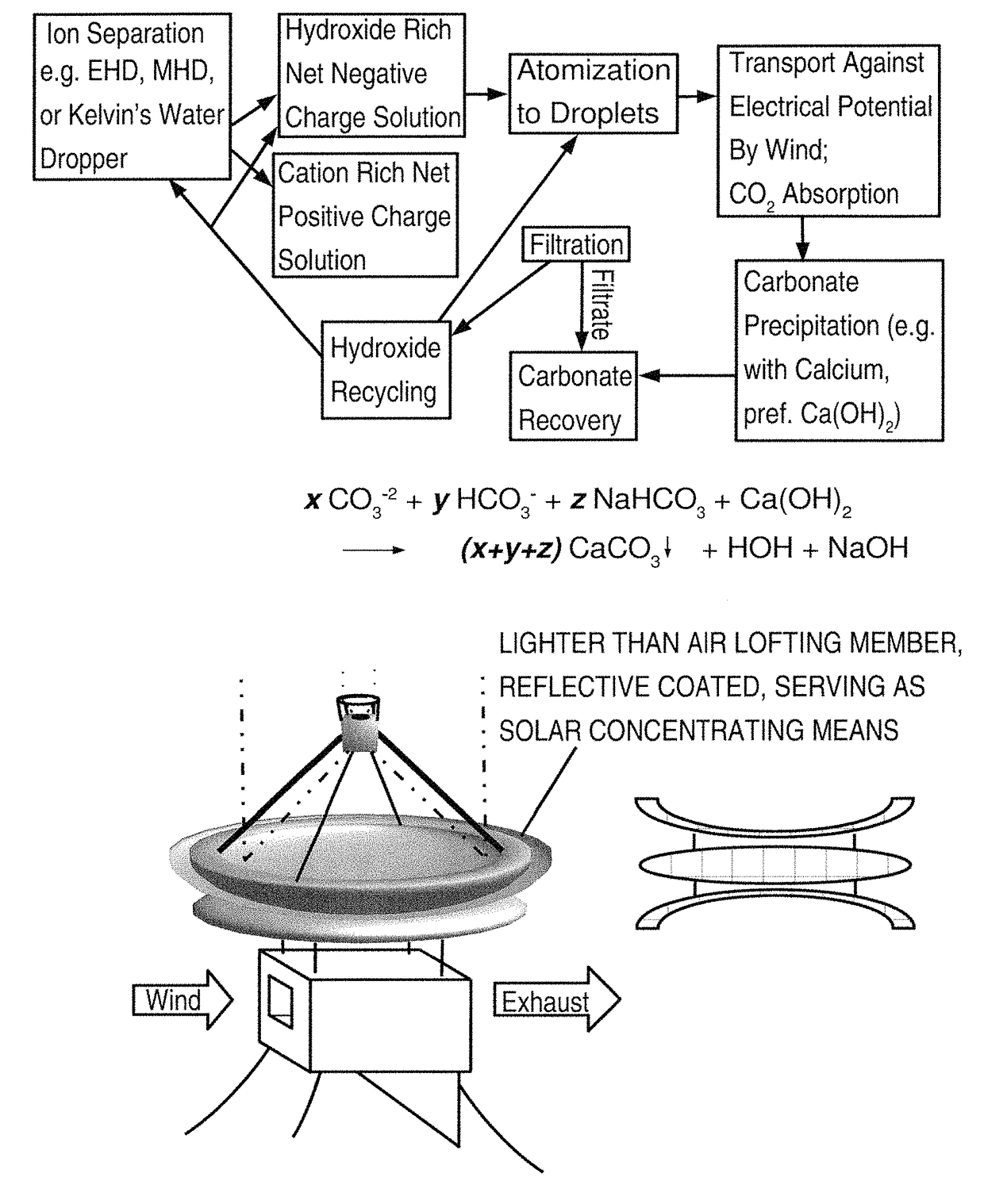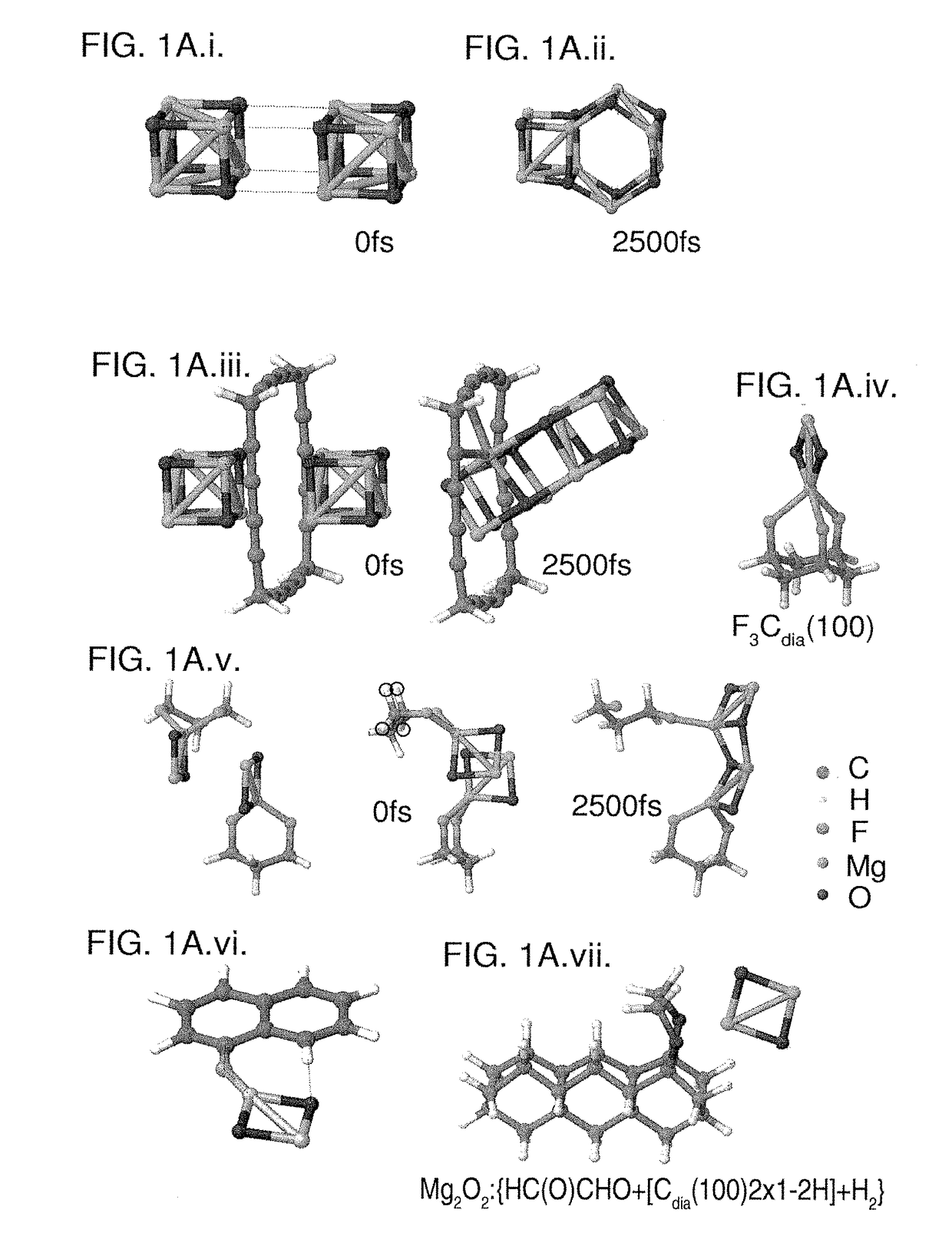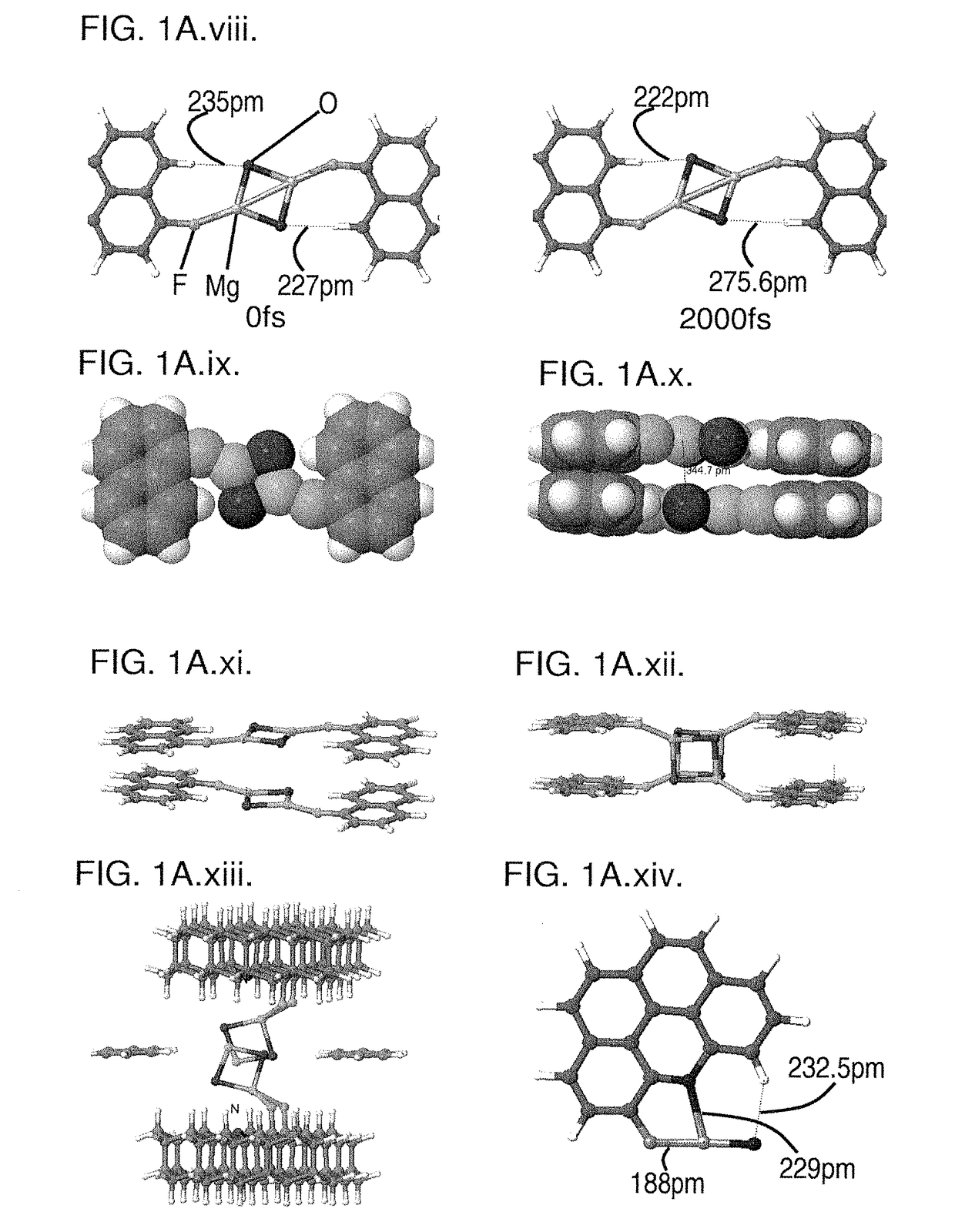Convergent nanofabrication and nanoassembly methods, means and applications thereof, products and systems therefrom including methods and means for conversion of pollutants to useful products
- Summary
- Abstract
- Description
- Claims
- Application Information
AI Technical Summary
Benefits of technology
Problems solved by technology
Method used
Image
Examples
examples
[0108]In the following examples, descriptions given are of single samples for simplicity; in practice, a plurality of samples or particles or surfaces will be treated in parallel or batches and, where random, modifications are likely to occur at a plurality of sites on each surface. When used as tools, preferably locations of modifications on surfaces are mapped and information stored, permitting multiple modifications on each particle to be used between tool changes and also to prevent undesired contact of tools with target sites. In preferred cases, each tool or reactant or intermediate or workpiece is situated on a separate body, structural member, or carrier.
example i
×1 Supported Ethyne Tool Nanofabrication
[0109]A clean, flat hydrogenated Si(100):2×1 surface under UHV is specifically dehydrogenated using an opposed STM at specific sites for anthracene chemisorption, preferably by the feedback controlled loop method of Lyding et al., [Lyd98]. 9-chloro-9,10-dihydro-Anthracene vapor at a pressure of 1-1000 picoTorr is contacted with the specifically dehydrogenated Si(100):2×1 surface for a time sufficient for isolated molecules to specifically chemisorb thereto. This vapor is removed or flushed out with argon, and a vapor of sodium acetylide is introduced for a time sufficient for reaction with chemisorbed 9-chloro-9,10-dihydro-Anthracene to yield ethyne functionalization thereof.
example ii
1 Supported Base Tool Nanofabrication
[0110]A clean, flat hydrogenated Si(100):2×1 surface under UHV is specifically dehydrogenated using an opposed STM at specific sites for anthracene chemisorption, preferably by the feedback controlled loop method of Lyding et al., [Lyd98]. 2,3-benzo-5,6-benzo-7-aza-norborna-2,5-diene vapor at a pressure of 1-1000 picoTorr is contacted with the specifically dehydrogenated Si(100):2×1 surface for a time sufficient for isolated molecules to specifically chemisorb thereto.
PUM
 Login to View More
Login to View More Abstract
Description
Claims
Application Information
 Login to View More
Login to View More - R&D
- Intellectual Property
- Life Sciences
- Materials
- Tech Scout
- Unparalleled Data Quality
- Higher Quality Content
- 60% Fewer Hallucinations
Browse by: Latest US Patents, China's latest patents, Technical Efficacy Thesaurus, Application Domain, Technology Topic, Popular Technical Reports.
© 2025 PatSnap. All rights reserved.Legal|Privacy policy|Modern Slavery Act Transparency Statement|Sitemap|About US| Contact US: help@patsnap.com



